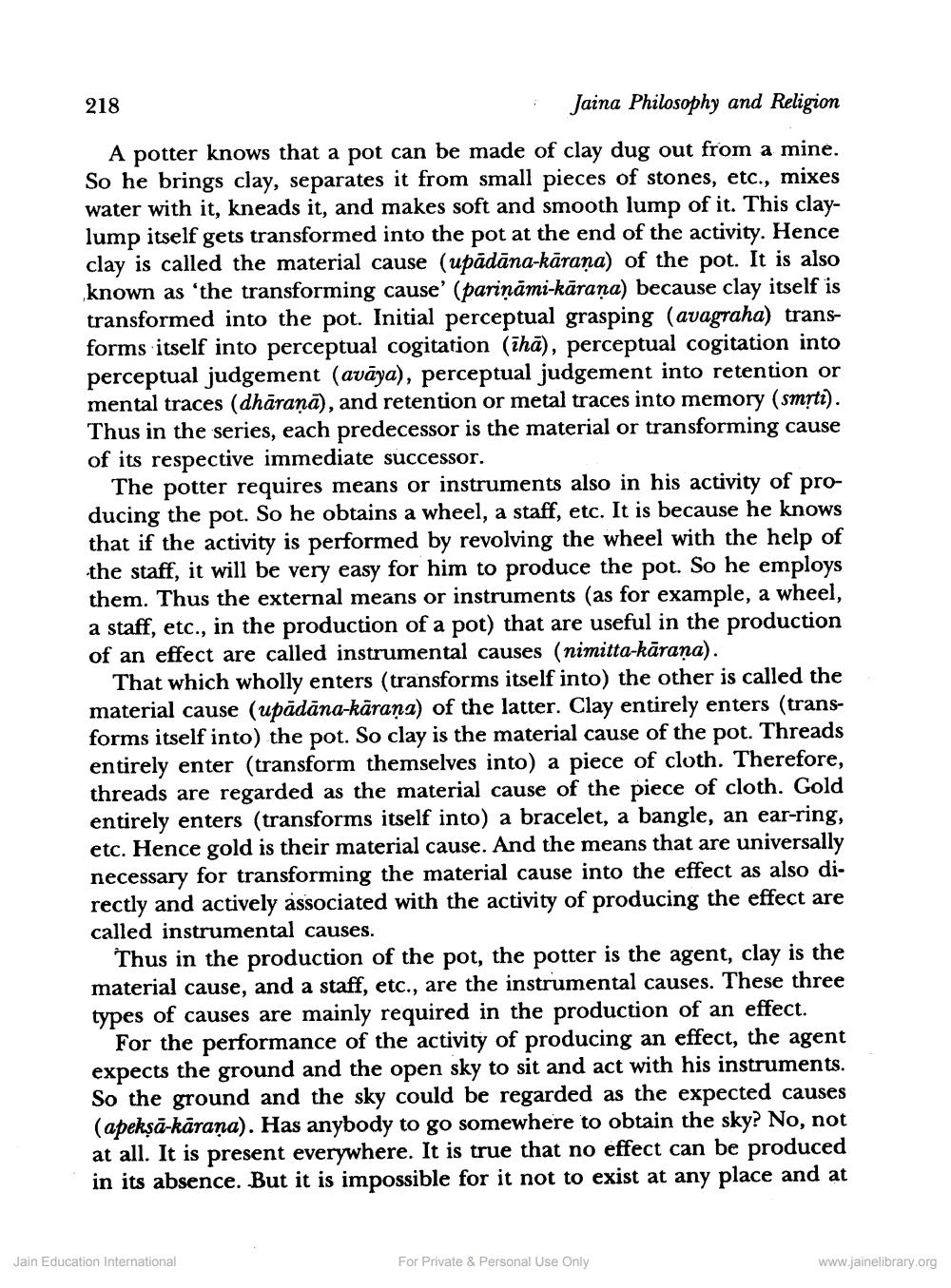________________
Jaina Philosophy and Religion
A potter knows that a pot can be made of clay dug out from a mine. So he brings clay, separates it from small pieces of stones, etc., mixes water with it, kneads it, and makes soft and smooth lump of it. This claylump itself gets transformed into the pot at the end of the activity. Hence clay is called the material cause (upādāna-kārana) of the pot. It is also known as 'the transforming cause' (pariņāmi-kāraṇa) because clay itself is transformed into the pot. Initial perceptual grasping (avagraha) transforms itself into perceptual cogitation (iha), perceptual cogitation into perceptual judgement (avāya), perceptual judgement into retention or mental traces (dhāraṇā), and retention or metal traces into memory (smrti). Thus in the series, each predecessor is the material or transforming cause of its respective immediate successor.
218
The potter requires means or instruments also in his activity of producing the pot. So he obtains a wheel, a staff, etc. It is because he knows that if the activity is performed by revolving the wheel with the help of the staff, it will be very easy for him to produce the pot. So he employs them. Thus the external means or instruments (as for example, a wheel, a staff, etc., in the production of a pot) that are useful in the production of an effect are called instrumental causes (nimitta-karana).
That which wholly enters (transforms itself into) the other is called the material cause (upādāna-kāraṇa) of the latter. Clay entirely enters (transforms itself into) the pot. So clay is the material cause of the pot. Threads entirely enter (transform themselves into) a piece of cloth. Therefore, threads are regarded as the material cause of the piece of cloth. Gold entirely enters (transforms itself into) a bracelet, a bangle, an ear-ring, etc. Hence gold is their material cause. And the means that are universally necessary for transforming the material cause into the effect as also directly and actively associated with the activity of producing the effect are called instrumental causes.
Thus in the production of the pot, the potter is the agent, clay is the material cause, and a staff, etc., are the instrumental causes. These three types of causes are mainly required in the production of an effect.
For the performance of the activity of producing an effect, the agent expects the ground and the open sky to sit and act with his instruments. So the ground and the sky could be regarded as the expected causes (apekṣā kāraṇa). Has anybody to go somewhere to obtain the sky? No, not at all. It is present everywhere. It is true that no effect can be produced in its absence. But it is impossible for it not to exist at any place and at
Jain Education International
For Private & Personal Use Only
www.jainelibrary.org




